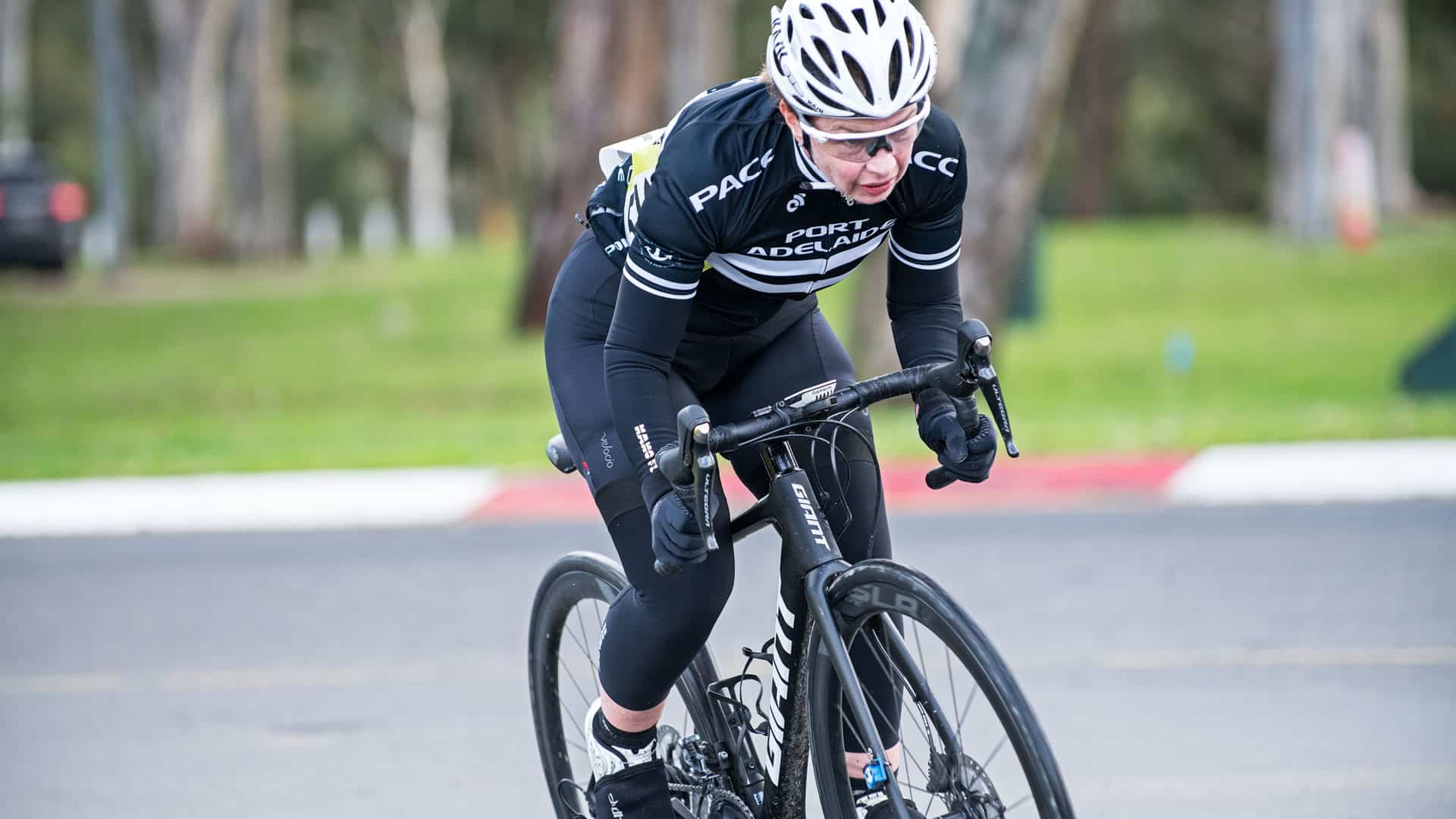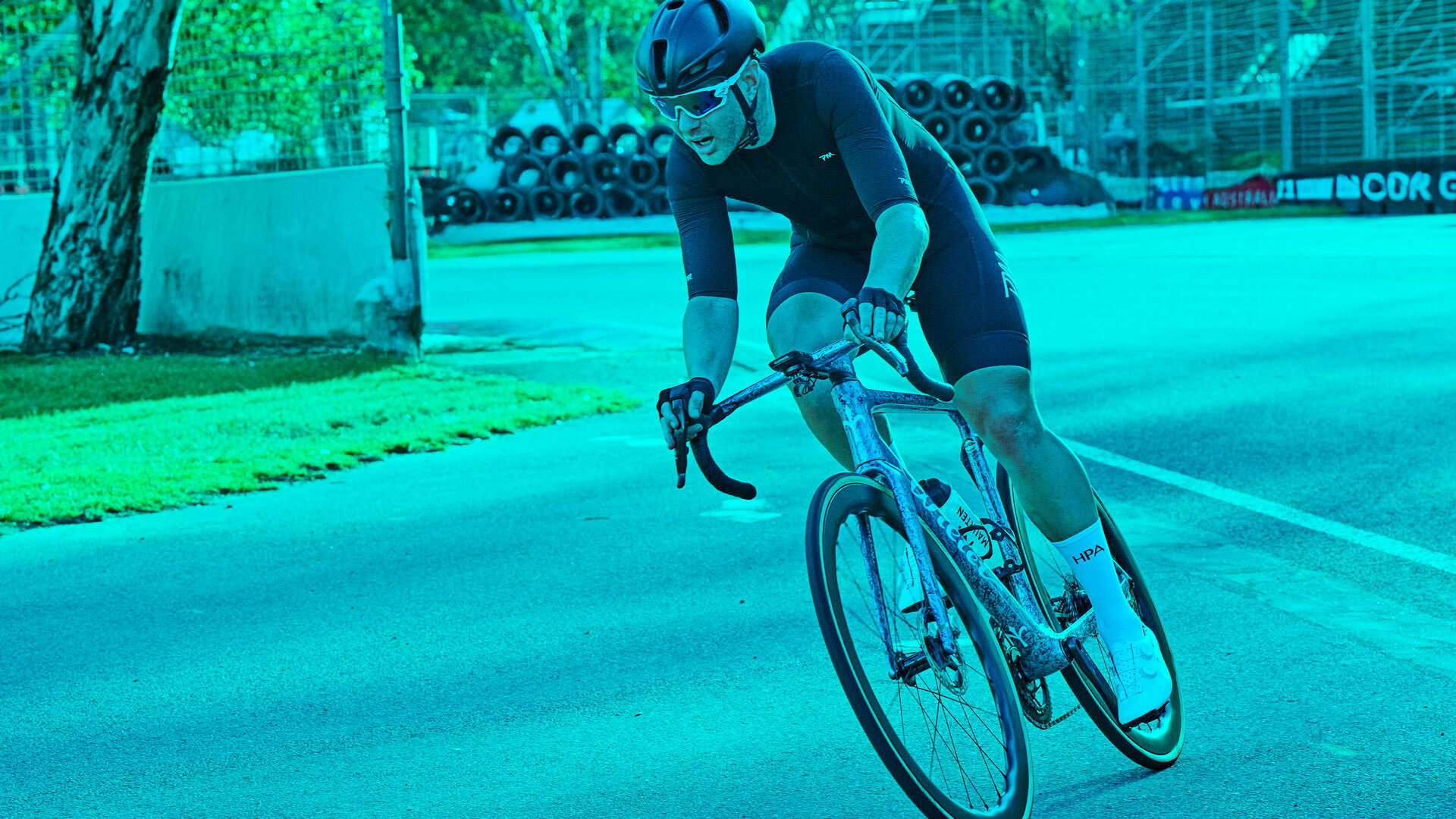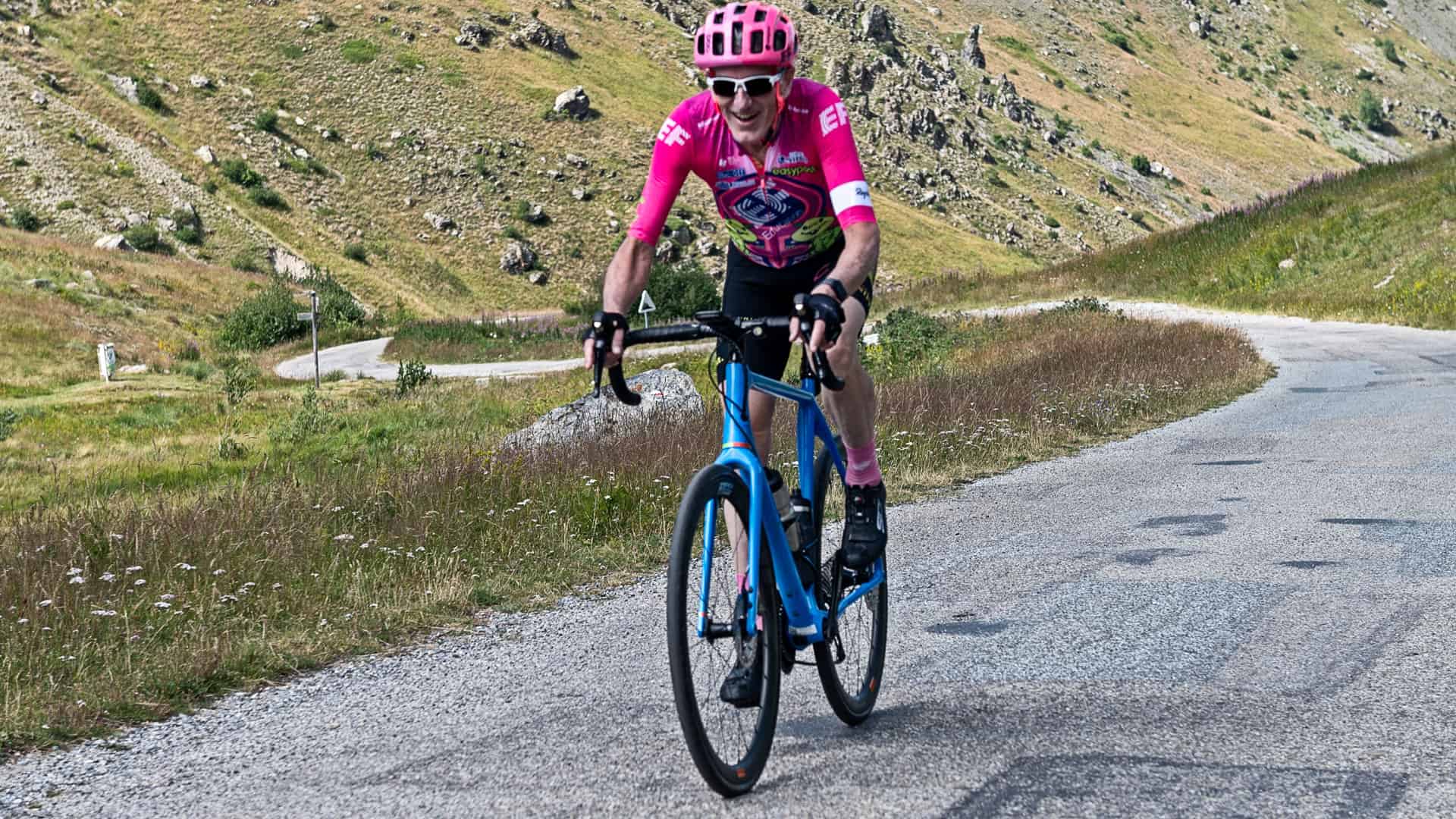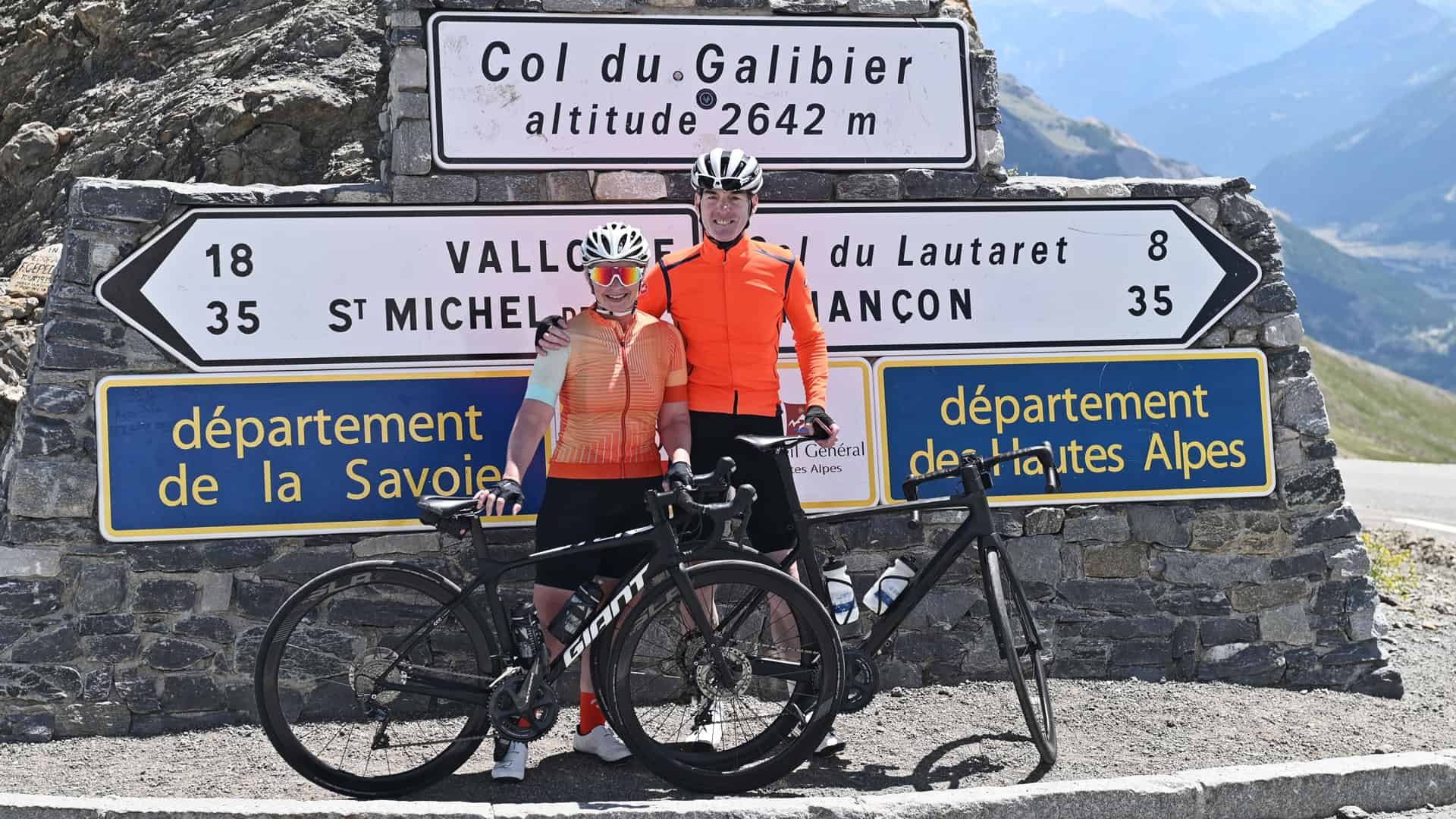In this video Matt Brindle our functional strength coach discusses why it more important than ever that we do strength training. This is the seventh part of several videos on the subject of functional strength training.
Video Transcript:
David: Yes, so there is kind of a bit of maintenance going on there. That’s important as well. This is one of the things that, you know, cycling is such a mechanical motion. It’s not like swimming or running. Its quite mechanical; so its almost like you’re locked into a machine.
Matt: You are! You are locked into a single plain machine. What you do on the machine, which is the body, will determine how much you can put through into the pedals and to develop power
David: and its about the tabs. Coming back to that, the fact that you’re locked into the machine, you really need to work on the maintenance. Im a big fan of maintenance. I’m a big fan of stretching and other exercises to help obviously alleviate some of the biomechanical, neurological, muscular type of patterns that we get into for cycling that are detrimental to our health.
Matt: Yep. Look, again, the whole maintenance side of things for cyclists because they spend so many hours on the bike, is almost more important than the hours they spend on the bike. Because the more time they spend on the bike and not looking after themselves; the more time they’re going to be locking down the hips, seizing out through the core, immobilizing the ankles – all that stuff. The mobilizers on our DVD can be done on their own.
David: Yeah, sure. Yep, okay. They’re crazy.
Matt: We put it together with a functional strength program because the best solution we’ve found to date is that if you mobilize a complex and you correct some extensibility in the tissues; you then need to also strengthen that. If you create some success in the motion, give it some strength.
David: Right, great.
Matt: All right. We’ve got the two on there for that purpose – but if you’re timed for and cyclists are, as are most people today – the mobility section, the mobilizer section of that DVD, is really important. There is a big difference between doing mobilizers and doing static stretches.
David: Yeah. Lets talk about that. Obviously static stretches, they’ve been common for a very long time. I used to do them as a kid. You get into this stretch and you just hold it.
Matt: If you go back a few years, David, you and I did them together.
David: Yes, we did! In fact we spent a whole year doing that.
Matt: We did, didn’t we?
David: I know, because I wanted to work on my flexibility and we got some good results with our flexibility but it really didn’t translate into developing more strength. I didn’t see any results from that but the interesting thing was that once I started working more on the mobilizers, it was and you don’t spend too much time on it. You get some really good results and it was what I quite enjoyed about the mobilizers.
Matt: Your question was pretty much: What is the difference between a mobilizer and what we call a traditional static stretch and probably even a dynamic stretch? Now, if we look at traditional static stretches the format was, you take the muscle to a range of motion. You may be sitting, standing – whatever it is – doing the hamstrings, for example. Okay, you’d bend toward your toes, you get a stretch in the hamstring, maybe even a little bit in the calf. You would hold it there for 20 seconds. Now there is a certain amount of neurological response that goes on there; its just called a stretch reflex. After about ten seconds, that would allow the muscle to relax and you could again gain a further range of motion.
Okay. What you were doing there is by creating a tension in what we call the myofascial system, which is again the muscles and the connected tissue. You would stimulate a proprioceptor, which is called the golgi tendon organ. That exists within that what we call a muscular tendonous junction; so where that belly of the muscle is and that tendon come together – and the tendons the part that touches the bone. There are these proprioceptors that sit there to sense tension and when they are stimulated through an increase in tension, they then tell the muscle spindles – which is another proprioceptors that exist within the muscle belly – they then tell them to switch off, relax and allow extensibility in that muscle.
David: Create a stretch.
Matt: Create a stretch. That’s fine. The problem with that is that if you switch off the muscle spindles, which are there to cause the muscle to contract if it is under lengthening tension. You are then creating a muscle, which is not working momentarily.
David: Right.
Matt: You may have done some stretches and what I know, we did some at times. Especially the adductor stretch where you had the feet wide apart and you’ll notice that trying to come out of that; it was really hard.
David: Really hard to come out of those stretches.
Matt: You just couldn’t communicate to release.
David: It’s like at the end of the stretch, and then it’s like you actually have to move around to get your
Matt: To get them working again!
David: to get them working again!
Matt: What you just said there, is perfect. You had to move to get them working and that is it. That is the beauty of the body is that you’ve got to move it (laughs) to get it to work. You’ve got to move the muscles to pump the vascular system. You’ve got to move the muscle to get the lymphatic system. You’ve got to move to get those proprioceptors going. Okay? If you are going to perform an activity that is dynamic in nature and cycling is; if you’re switching off muscles prior to getting onto that bike, they are not going to be a 100% for you. They will come on over a period of time and there is a period of time of which it takes to come back to normal. They will come on and start to work over a period of time but in that period of time, recent researchers say there’s a decrease of up to 30% in the muscular output
David: Wow!
Matt: Doing static stretching prior to doing a dynamic activity.
David: Thirty percent?
Matt: Thirty percent.
David: Those people who are warming up and doing static stretches prior to doing their sport, you are talking you are saying there is a drop. How long does that 30% last for?
Matt: It’s been known to last up to a couple of hours.
David: A couple of hours?
Matt: Yes. It would fade obviously, over that period of time but there is a decreased output for up to a couple of hours.
David: So you do some stretching before your criterion, right?
Matt: Yes.
David: And then you’re going to be less strong?
Matt: Yes. Definitely, because you’ve in a way you’ve switched off the nervous system. Motion cant occurs properly, effectively, efficiently, if those proprioceptors, which is the nervous system, aren’t firing a hundred percent.
David: Amazing.
Matt: All right.
David: That’s incredible. Now, obviously, mobilizers.
Matt: Mobilizers are the other end of the sky. Mobility that’s where it comes from. Now all movement is about mobility; be it great or small.
David: Well, the body is designed to move. That is one thing that you told me as well; The body is designed to move.
Matt: Its designed to move; designed to move in many different directions and not in repetitive patterns. Mobilizers initiate subtle motion. If you look at the mobilizers in the DVDs that we’ve done, those subtle motions occur again at the ankle, a hip and the thoracic spine; all at the same time. They may be greater in one area than another.
David: Subtle movements and bigger movements elsewhere.
Matt: Exactly. I’ll still do an ankle mobilizer and Ill call it and I’ll label it an ankle mobilizer, but I know it’s still going to have something going on at the hips. I know it’s still going to have something going on at the thoracic spine. Okay, and that is the beauty of integration is that it uses the whole body and there is a chain reaction, and whatever is small down here will become great up there, or even vice versa.
Mobility is about getting what we call your comfortable range of motion, rather than forcing it into a range. Your comfortable range of motion, taking it there and coming back in slow controlled patterns and they are not held for any point of time. It’s just a continual motion. Now, I spoke before about two proprioceptors, that was the GTOs, which are the golgi tendon organs at the muscular tendonous junction and the muscle spindles. Now, we used to really just be concerned with what was happening in the muscle spindles. Because that is the muscle part and that is what creates the power and it does. That is what muscle does; its whole function. I’ve also briefly mentioned the fascial system, the myofascial system. You cant separate the two. You actually can’t separate fascia from anything.
David: How do you mean you can’t separate them?
Matt: There are three systems in the body that if you remove every other cell such as there’s the nervous system, vascular system and the fascial system. Say we were just looking at the nervous system and we removed every other cell that’s not part of the nervous system. You would have an almost complete map of the human body. It’s that extensive. Do you understand?
David: Okay. Yeah.
Matt: Vascular system lets look at that; all the blood vessels. If we removed every other tissue that is not part of the vascular system, you would have a complete replica, because blood goes everywhere.
David: Three-dimensional.
Matt: Three-dimensional organs around bones, muscles
David: There’d be space.
Matt: There would be space! You could see through it but what I’m saying, is that on its own is an extensive system. The fascial system the fascial system we used to think and medical science used to look at it in this term. When we say fascia to the medical fraternity they think tendons, ligaments, joint capsules – those thick bands of sinewy material at the ends of muscles and the ones that join bone into bone. That was their perception of what fascia is. Fascia is far more extensive than that. Fascia envelopes every cell, every spindle, envelopes every muscle belly (laughs) envelops every bone, nerve, vein, artery. You name it, it’s there. It holds everything together. It was thought to be quite innate. You’d remove it, it didn’t matter.
David: It didn’t really matter. (laughs)
Matt: We have this stuff, but it doesn’t matter.
David: But that’s that doesn’t make sense. Cause if it’s in the body there must be a reason for it. I mean, there’s not a lot of redundancy in the human body, is there?
Matt: No. Look, we’ve spent millions of years trying to perfect it and we’ve done it without having to think about it. So this fascia, if we look at it – and it doesn’t exist on its own – but its part that we need to take into consideration these days. When you look at fascia in say a cadaver, so a dead body, it’s just that sinew that you see on meat. It doesn’t look like much. In a living organism, such as us – you and me I believe
David: Right now.
Matt: Right now. There’s all these other stuff, and we call it the extracellular matrix, which is all the gluey, watery, fluidy, seaweed sort of stuff that envelops everything in the body. Okay, that’s fascia. The importance of having all that there is that it allows the body to mitigate stress and I’m talking a movement and a motion sense.
David: Not a stress that I need to pay the bills this week.
Matt: It has an effect on that too. (laughs)
David: Okay. All right. But you’re talking about more of a
Matt: More a mechanical stress. Let’s stick with the mechanical stress. When it’s in a good state, it’s fluffy. It’s not sinewy, its not bound around everything. There is space there and there is fluid moving. Now the fibers of fascia have tiny little I suppose you can call them fibers that like to grab onto water. That water allows motion through that fascial system. It allows muscles to move over each other.
David: To move over each other.
Matt: If you have – say an activity were doing right now – sitting down. I’m sitting on my backside, my glutes are being stetched. I’m sitting on them. I’m compressing them. I’m not moving them. All the water that sits within that fascia is being compressed out, so those little fibers that retain water have lost it. They start to bunch up and the tissue starts to glue up, which means the muscles and everything else that relate to it, don’t move as well. You’ll get motion but it wont be successful motion. All right. The terminologies we have two terminologies of hydration when were talking about fascia; we have bound and unbound. Somebody that drinks enough water but does not move will have unbound hydration, unbound fluid. Its not sitting within the fascial cells, its not serving a purpose. Its just around in the body. Its not part of the fascial system, because its being compressed out in certain areas. Then you have bound. Motion within that fascial system allows those little fibers to take up the water again.
Im going to divert back to the mobilizers. The subtle motion we do on mobilizers, allows the fascial tissue to take up the water again. Sometimes, it needs a little bit of help. We, you and I, have done a little bit of fun while we were at work before. Okay? Back in the system.
David: It really helps.
Matt: The two together, mobilizers and [inaudible 00:14:49]. Beautiful. So we want bound hydration, we want enough water in the system.
David: That’s the Holy Grail.
Matt: It’s part of the Holy Grail. It’s part of the picture. Look, the body is the Holy Grail. Its a part of it and without it, you’re going to have compromised movement. The mobilizers are there not only to allow extensibility in the tissues but it also allows that fluid to come back into that fascial system fluff it up, and allow the muscles to slide and glide over each other. Muscles don’t just work on their own; they transmit forces from one to another. They don’t just work up and down, that will twist, that will roll over each other as you’re riding a bike. It’s important that that happens with enough hydration, with enough water in you.
David: You need to be hydrated.
Matt: You do need to be hydrated properly.
David: It’s like when you’re sitting on a chair forever, you get up and it’s like you actually feel you need to move around, and that just helps.
Matt: Yes. That’s perfect! It helps, that movement helps, like you are. As I’m sitting here, my hip, my anterior hip is just doing nothing. It’s short and the tissue is just going, thank you very much, and my butt muscles are going, where is the fluid in me?
David: This is really important and this is one of the case. It’s like a lot of people are office-bound, sitting on a desk all day. A lot of athletes that I coach, they’re professionals and that’s what they spend all day doing, is sitting behind a desk. For me it’s really the functional strength training really becomes very, very important; in there I have to follow these athletes up.





Leave A Comment